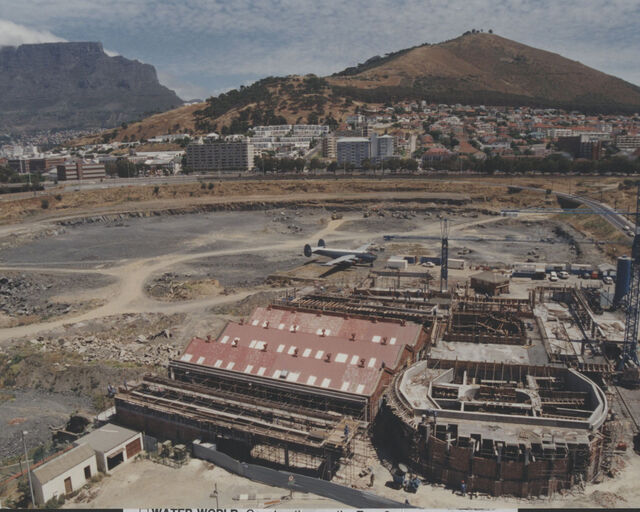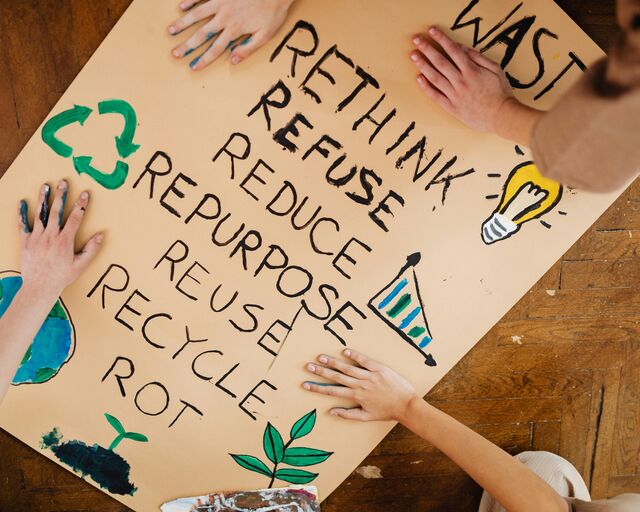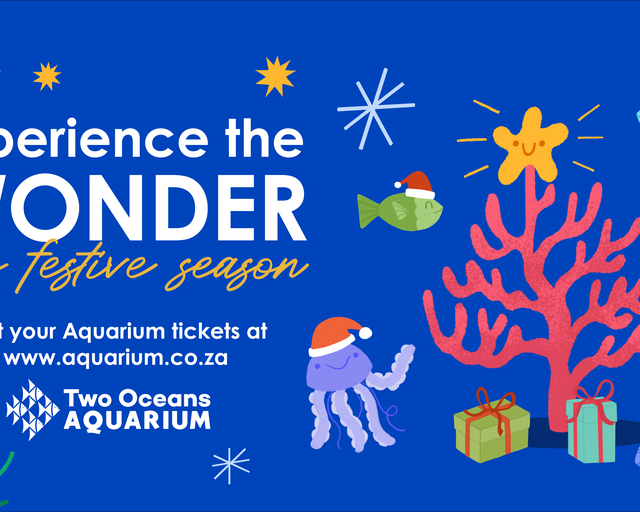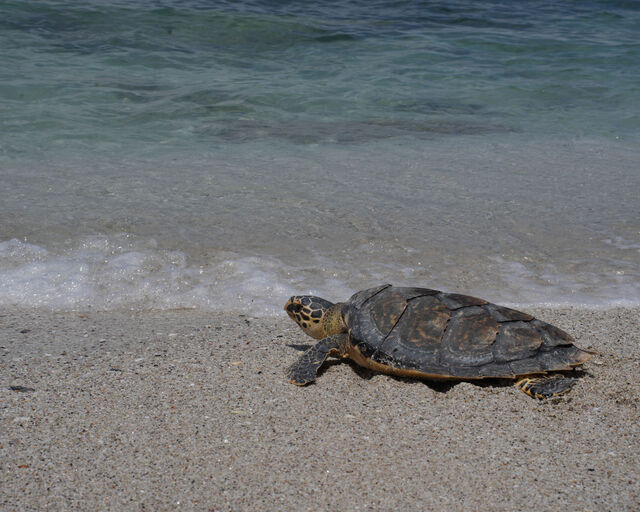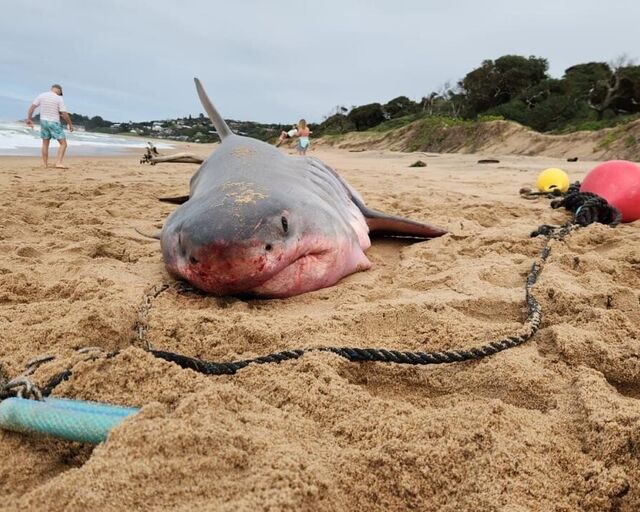Learn how to protect our blue planet this World Oceans Day
Today is World Oceans Day! At the Two Oceans Aquarium, this day is close to our hearts as we are privileged to represent not one, but two, incredible oceans: The Atlantic and the Indian.
The Atlantic and Indian Oceans meet at Cape Agulhas, giving the Two Oceans Aquarium its name and the unique opportunity to showcase the diversity of both oceans. In the Atlantic Ocean, the slow, cold Benguela Current flows, while the fast, warm Agulhas Current sweeps through the Indian Ocean. These currents make for vastly different ocean systems, but unfortunately, they have something in common: Our oceans are in crisis because of human activities.
At the Two Oceans Aquarium, our vision is abundant and healthy oceans for life – we aim to encourage love, respect, and understanding for our ocean so that people are motivated to take action for its future well-being. We are part of local and global efforts to conserve species and care for ecosystems; to educate and raise awareness; to urge governments for greater protection of the ocean and its inhabitants; to inspire behaviour change; and to showcase the beauty of life from one of the wildest places left on the planet.
Every day is World Oceans Day at the Two Oceans Aquarium, so let’s learn a bit more about what this day means and how we can all make a positive difference.
What is World Oceans Day all about?
We live on a blue planet – the world’s oceans cover a whopping 97% of the Earth. Not only is the ocean the world’s biggest carbon sink, absorbing 25% of all carbon emissions while producing about 50% of the Earth’s oxygen, but it also regulates the planet’s climate and provides millions of jobs. The ocean is our life support system, and human activities have placed this system under enormous pressure.
World Oceans Day aims to spark collective, global action for a healthy ocean. The United Nations officially recognised the day in 2008, and it has become a global movement since then. World Oceans Day believes that, by working together, we can create a better future with an abundant ocean and stable climate, and we agree!
Here are a few ways that you can protect our blue planet:
When we understand the threats and issues facing our ocean, it can be daunting to know how to help. Luckily, we have some easy ways that you can play a role in protecting our blue planet!
1. Join a beach clean-up
Every day, the staff at the Two Oceans Aquarium and its Foundation witness the impact of pollution on our ocean and its inhabitants. Our Marine Wildlife Management Programme frequently disentangles Cape fur seals ensnared by plastic cords, cables, ropes, and discarded fishing gear. Our Turtle Conservation Centre regularly rescues turtles that have ingested plastic or been entangled in discarded fishing gear.
Our regular beach cleanup, Trash Bash, is about making a positive difference in the ocean’s health. The small action of interrupting the cycle of pollution at the shore sparks a ripple effect for the future of the ocean.
Our next Trash Bash is being held at Sunrise Beach on 21 June – let’s protect the ocean’s future (and ours) while we have the chance.
2. Support sustainable seafood
The effects of industrial fishing on the ocean are well known. Not only does commercial fishing decimate global fish stocks, but the accompanying bycatch rates are incredibly high, affecting animals like sharks, turtles, and dolphins. The overall ecosystem damage of commercial fishing is devastating – entire coral reefs are ripped up by bottom trawlers, while the loss of prey species like sardines and anchovies impacts the survival of myriad marine predators.
You can make a difference in maintaining the balance of the ecosystem by choosing sustainable seafood. WWF created the Southern African Sustainable Seafood Initiative (SASSI) to help people do just this – better choices mean the difference between a healthy ocean and one in peril.
SASSI’s extensive list of seafood options available in southern Africa is split into an easily understood colour system: Green (good choice), orange (think twice), and red (don’t buy). Species on the green list are the best option: They are from the healthiest and most well-managed populations. Orange-list species are of concern for one or more of three reasons: Overfishing means the species cannot sustain pressure, the farming method poses environmental harm, or the species’ biology leaves it vulnerable to fishing pressures. Species on the red list are a definite “no” for your shopping trolley – these are from unsustainable populations, lack appropriate management, or are illegal to buy and sell in South Africa.
3. Reduce your plastic use
Plastic is in the utensils we eat with, the clothes we wear, the appliances we use, and the products we buy. The scary thing is that plastic cannot truly ever be disposed of - it cannot break down, biodegrade, or become part of the natural system again. Instead, it breaks up infinitely – a single-use water bottle will break into smaller and smaller pieces until even plankton mistakes it for food. And there is a devastating amount of plastic in the ocean. According to Ocean Conservancy, nearly 11 million metric tonnes of plastic enter the ocean every year. This is over and above the 200 million metric tonnes that are already circulating in the currents around the world.
Even small steps keep us moving forward towards a healthier ocean – you can help by:
Replacing single-use plastics with reusables.
- Replace your takeaway coffee cups with a reusable mug. Some coffee shops even give a discount if you bring your own cup!
- Replace plastic shopping bags with reusable bags.
- Say no to straws.
Being responsible.
- If you have to buy plastic, always use it responsibly. Do your best to recycle the item once you have used it – for example, use plastic bags as bin liners.
- Upcycle if you can.
- NEVER litter. Remember – all drains lead to the ocean, so every time you litter, you are contributing to the plastic crisis.
4. Explore the ocean
You are more likely to protect something you’re passionate about, so dive into learning about the ocean and its inhabitants! Whether joining a friend for a walk along the beach, taking up scuba diving, or signing up for an ocean education course, there is always more of the ocean to discover and fall in love with.
If you’re unsure where to start, the Two Oceans Aquarium should be your first step! Stroll through the Aquarium and experience the wonders of the ocean yourself: From the microscopic strawberry anemone and the enigmatic octopus to the magnificent ragged-tooth shark and the gorgeous honeycomb stingray. If you want to become immersed in the underwater world, the Aquarium is the place to start.
Related News
Sign up to our Newsletter
Receive monthly news, online courses and conservation programmes.
